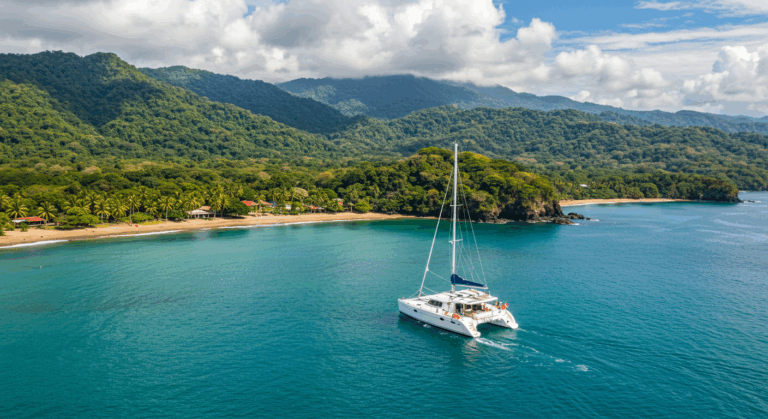Costa Rica is often viewed as a tranquil haven of natural beauty and biodiversity, but its appeal runs deeper than scenic landscapes and tropical climate. Whether you are considering a visit, studying global sustainability models, or simply exploring culturally rich destinations, Costa Rica offers insights that are both surprising and impressive.
In this article, we present 20 professionally curated facts about Costa Rica that highlight why this Central American country stands out globally in areas ranging from environmental leadership to public health and education.
1. Costa Rica Does Not Have Military
Costa Rica is one of the countries that in 1949 in a historic decision abolished its army. Since then, the resources of the nation have been diverted to education, health, and conservation of the environment, which is usually mentioned in the context of world peace and development.
2. Over a Quarter of the Nation is Preserved Land
Costa Rica is leading in conservation worldwide. It has more than 25 percent of its land as a reserve area in the form of national parks, reserves and wildlife refuges. This pledge guarantees the safety of a variety of ecosystems and numerous species.
Discover Costa Rica’s natural beauty with a shared catamaran tour in Costa Rica
3. It harbours about 6% of the biodiversity of the World.
Costa Rica has close to 6 percent of global biodiversity even though it occupies only 0.03 percent of the earth. This astounding density incorporates thousands of plants, bird, amphibian and insect species.
4. The National Ethos is represented by Pura Vida
The greeting of Pura Vida, which translates to pure life, is not just a greeting, it is a way the country looks at its culture, it is an insistence on being healthy, simple, and optimistic.
5. Most of the country runs on Renewable Energy
Costa Rica has been producing more than 98 percent of its electricity using renewable energy such as hydroelectric power, wind energy, geothermal energy and solar energy. It is an example to all the countries of adopting clean energy.
6. World-Class Coffee is a National Export
Costa Rican coffee is among the finest globally, cultivated primarily in highland regions. The country’s strict quality control and sustainable farming practices contribute to its global reputation.
7. Ranked Among the Happiest Nations
According to the Happy Planet Index and other international measures, Costa Rica consistently ranks as one of the happiest countries in the world, thanks to its strong social systems and access to nature.
8. You Can Cross the Nation Coast-to-Coast in a Day
Costa Rica’s relatively compact geography, less than 300 kilometers wide, means it’s entirely feasible to travel from the Caribbean Sea to the Pacific Ocean in a single day.
9. Sloths Are Synonymous with Costa Rican Wildlife
The country’s two- and three-toed sloths are some of its most iconic and adored animals. Visitors can see them in the wild or in specialized rescue centers.
10. Important Sea Turtle Nesting Sites
Costa Rica is a vital nesting location for several sea turtle species, especially in areas like Tortuguero and Ostional, which draw conservationists and tourists from around the world.
11. San José Offers a Growing Urban Experience
While Costa Rica is known for nature, its capital city, San José, has developed a dynamic blend of cultural institutions, gastronomy, and urban amenities.
12. Volcanic Activity Shapes Its Landscape
The country has over 200 volcanic formations, several of which are still active. These volcanoes contribute rich minerals to the soil, boosting the country’s agriculture.
13. Universal Healthcare Access
Costa Rica’s public healthcare system, the Caja Costarricense de Seguro Social (CCSS), provides affordable and accessible medical services to residents and legal visitors.
14. Key Attraction is Adventure Tourism
Costa Rica is a destination of choice to adrenaline-seeking travelers, with whitewater rafting and canopy zip-lining to hiking through cloud forests.
15. The Locals are also Proudly called Ticos and Ticas
The Costa Ricans have a local name that they use to refer to themselves as Ticos (men) and Ticas (women).
16. The seasonality of Whale Watching Opportunities
On the Pacific coast, in particular in Marino Ballena National Park, there is an opportunity to observe the humpback whales twice a year during their migration.
Want a more personalized ocean experience? Explore our private catamaran deluxe tour.
17. Gallo Pinto is a Cultural Staple
Rice and beans is a classic breakfast food that is a staple of Costa Rican households and a national icon.
18. Education is a National Priority
The literacy rate in Costa Rica is more than 97%. Education is free and compulsory up to secondary school, and the country invests long-term in the younger generation.
19. The Worker of Choice in Remote Locations
Costa Rica has become a destination of digital nomads who can experience long-term residence, contemporary infrastructure, and comfortable lifestyle.
20. Costa Rica means Rich Coast.
The country Costa Rica is named after the Spanish explorers who assumed that the territory was full of treasures but the very treasure of Costa Rica is its biodiversity, non-violent society, and sustainable development.
For read more, don’t miss “10 best places to visit in Costa Rica“
Final Thoughts
Costa Rica is much more than a tropical destination. Its peaceful ruling, sustainability, and strong cultural background are lessons and inspiration to other people, governments, and organizations across the globe. If you are plotting a trip or merely broadening your world consciousness, the following facts about Costa Rica will point out the richness and nature of one of the most wonderful countries.
And in case you have never thought about visiting and studying Costa Rica, now it is the best opportunity to do so.
Frequently Asked Questions
1. Is Costa Rica safe for international visitors?
Yes, Costa Rica is considered one of the safest countries in Latin America. However, as with any travel destination, it’s wise to exercise common precautions.
2. Do I need a visa to travel to Costa Rica?
Citizens from many countries, including the U.S., Canada, and the EU, do not require a visa for stays up to 90 days. Always verify current requirements before your trip.
3. What’s the best time of year to visit Costa Rica?
The dry season, from December to April, is ideal for beach and outdoor activities. The green season, from May to November, offers lush landscapes and fewer tourists.
4. What currency is used in Costa Rica?
The official currency is the Costa Rican colón (CRC), though U.S. dollars are widely accepted in many areas, especially tourist zones.







